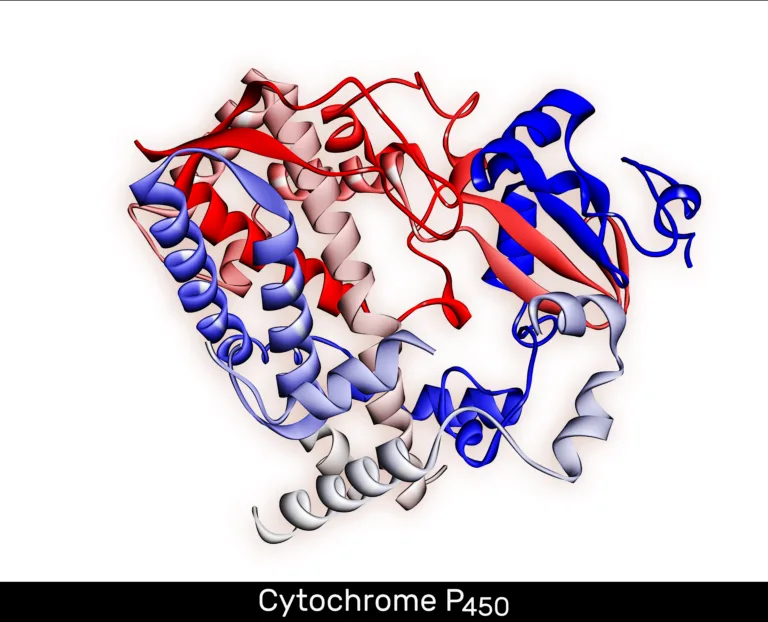In May 2024, the U.S. Food and Drug Administration (FDA) published a final rule that would bring laboratory-developed tests (LDTs) explicitly under the regulatory umbrella for in vitro diagnostic (IVD) devices. The intention was to phase out the FDA’s “enforcement discretion” approach over a four-year period, ultimately requiring LDTs to meet many of the same standards as commercially manufactured IVDs — including premarket review, labeling, quality systems, registration, reporting requirements, and post-market surveillance. The rule took effect on May 6, 2024.
However, in March 2025, a U.S. district court vacated the final rule, ruling that the FDA lacked the statutory authority to regulate LDTs as medical devices. This decision has thrown the future of LDT oversight into uncertainty. Understanding both the original rule and its reversal is critical — especially for laboratories involved in pharmacogenomic testing, many of which operate via LDTs.
Below we examine the rule, its intended phased implementation, the court’s ruling, and the implications — positive, negative, and unresolved — for pharmacogenomic laboratories and patient access.
The Original Rule: What It Proposed and Why
Before the May 2024 rule, FDA had long asserted the authority to regulate LDTs as medical devices, but had exercised enforcement discretion for most LDTs, meaning it did not enforce many of the regulatory requirements that licensed IVD manufacturers must satisfy. LDTs have traditionally been overseen under CLIA (Clinical Laboratory Improvement Amendments), administered by CMS, focusing on laboratory quality and analytic validity.
The 2024 final rule sought to remove ambiguity by amending 21 CFR part 809 to explicitly treat IVDs as devices “including when the manufacturer is a laboratory.” The rule would phase out enforcement discretion so that LDTs would be subject to the full IVD regulatory framework — in a risk-based manner.
During drafting, the FDA received thousands of comments. In response, it included carve-outs and targeted enforcement discretion for certain classes of LDTs (for example, older tests grandfathered in, certain transplant HLA tests, LDTs for unmet needs in integrated health systems, and tests approved under New York State’s CLEP).
Phased Implementation Timeline (as proposed)
The rule was structured over five stages — covering increasing regulatory obligations over four years:
- May 6, 2025 — Stage 1: Laboratories must comply with Medical Device Reporting (MDR), correction and removal reporting, and maintain complaint files.
- May 6, 2026 — Stage 2: Compliance with registration and listing, labeling, and investigational device (IDE) requirements.
- May 6, 2027 — Stage 3: Compliance with Quality System (QS) requirements (in part).
- November 6, 2027 — Stage 4: Premarket review obligations (e.g. PMA or 510(k)) apply to high-risk IVDs offered as LDTs.
- May 6, 2028 — Stage 5: Premarket review requirements for moderate- and low-risk LDTs (those requiring submission) would take effect.
Throughout these stages, the FDA planned to enforce only what was appropriate given the risk level of the test, and certain LDT categories would be subject to ongoing enforcement discretion even after full implementation.
Impacts Foreseen for PGx Laboratories
Because pharmacogenomic assays are often developed in academic or specialized clinical labs (i.e., as LDTs), the proposed rule would have had major implications:
- Regulatory Burden: Labs would need to prepare premarket submissions (e.g. 510(k) or de novo) for many pharmacogenomic LDTs, which demands extensive validation, documentation, and review.
- Quality Systems: Running a Quality Management System (QMS) to FDA’s expectations (ISO 13485 harmonization, design controls, CAPA, purchasing controls) is resource-intensive.
- Labeling and Safety Reporting: Labs would have to ensure their test labels (instructions, claims, warnings) meet FDA’s standards, and report adverse events, corrections, and removals.
- Cost and Timeline: Such regulatory compliance is expensive and slow. Smaller, academic, or niche labs might struggle to allocate funds or personnel.
- Test Portfolio Reevaluation: Labs might have to drop or limit less commercially viable tests or those with marginal volumes to focus on core offerings.
- Access Risk: Some labs, especially in research or underserved regions, might not survive the transition, potentially reducing patient access to PGx testing.
- Innovation Impact: Critics warned that increased regulatory burden might slow the development of novel PGx assays, especially for rare variants or underrepresented populations.
The Court Ruling: Vacatur and Its Consequences
In March 2025, a U.S. District Court for the Eastern District of Texas struck down the FDA’s final rule, holding that the FDA lacked statutory authority to regulate LDTs as medical devices under the current law. The court concluded that LDTs should be considered services, not devices, and thus more properly regulated via CLIA, not the FDA. The ruling vacated the 2024 mandate, returning the regulatory landscape back to its prior state under enforcement discretion.
With that ruling:
- The FDA’s planned phased requirements are no longer enforceable, at least until further legal or legislative action.
- Laboratories offering pharmacogenomic LDTs are not obligated, under that rule, to submit to FDA premarket review or full device QMS compliance.
- The ruling underscores a legal precedent: significant expansion of FDA authority requires clear congressional mandate.
- However, the decision leaves some ambiguity about whether FDA might pursue narrower regulation or incremental oversight through alternate device provisions (e.g., specimen collection devices as regulated objects).
- Stakeholders must watch for future rulemaking, legislative acts, or appeal of the decision.
Thus, while the rule was ambitious, its effective demise for now changes the immediate regulatory calculus for PGx labs, though uncertainty remains about what will come next.
Implications for Pharmacogenomics Laboratories
Given both the original rule and its reversal, what are the practical lessons, risks, and strategies that pharmacogenomic laboratories (and the broader PGx community) should consider?
1. Regulatory Uncertainty and Strategic Planning
Because the rule has been vacated, labs are not obligated (for now) to invest in full device-level compliance. However, the industry may still face incremental regulatory proposals, legislative changes (e.g., a “VALID Act”), or renewed FDA efforts. Laboratories should monitor developments closely and adopt a phased preparedness approach:
- Develop a regulatory roadmap identifying which PGx assays might sooner require stricter oversight (e.g. high-risk gene–drug tests).
- Start aligning internal quality practices with device standards (documentation, traceability, complaint handling) even if full compliance is not yet mandatory.
- Prioritize those tests with higher clinical impact or usage volumes for eventual compliance investments.
2. Balancing Safety, Access, and Innovation
One of the FDA’s goals was to ensure the safety, accuracy, and transparency of diagnostic tests, particularly as new technologies proliferate. But the balance is delicate: overregulation could limit access or stifle innovation, especially in less-resourced labs or rarer PGx assays. Labs and professional bodies must advocate for frameworks that ensure patient protection without undermining feasibility.
3. Cost, Capacity, and Equity Challenges
For many labs, compliance would demand capital investment (software, validation studies, regulatory staff). Smaller labs or those serving marginalized populations risk being priced out or consolidating services. In PGx, where variant frequencies differ by population, shutting down small or specialized labs could worsen inequities in data representation and access.
4. Test Portfolio Rationalization
Labs may need to assess which assays are sustainable under regulatory burden. Some low-volume or marginally validated tests might be discontinued. Conversely, focusing on high-demand PGx tests (e.g., CYP2C19, CYP2D6, TPMT, DPYD) may allow labs to concentrate compliance efforts where utility is highest.
5. Collaboration and Shared Infrastructure
To amortize compliance costs, labs may form consortia, share regulatory submissions, or develop centralized validation resources. Shared bioinformatics pipelines, reference data, and standard operating procedures (SOPs) could reduce duplication and ease compliance burden across institutions.
6. Communication with Clinicians and Stakeholders
Labs should proactively communicate with clinical users and institutional leadership about the evolving regulatory environment. Educating clinicians about the limitations, evidentiary robustness, and potential changes in test availability will help manage expectations and promote prudent ordering practices.
7. Maintaining Innovation for Rare/Understudied Variants
PGx testing often pushes the frontier—identifying rare variants, expanding allele catalogs, exploring pharmacogenes less characterized in mainstream practice. Regulatory burden might discourage investment in these niche areas. Stakeholders must guard against a future where only the most common, commercializable PGx assays survive regulation.
How This Intersects with Broader Trends in PGx and Diagnostics
It is instructive to see the FDA’s LDT ruling in the broader context of regulatory evolution, genomic medicine, and global PGx implementation.
- The FDA maintains a Table of Pharmacogenetic Associations, recognizing certain gene–drug pairs as having sufficient evidence for therapeutic decision-making. Even so, inclusion in that table does not guarantee that a PGx test must be performed, nor does it necessarily imply FDA endorsement as a companion diagnostic.
- Regulatory trends in diagnostics and software are shifting globally. In Europe, the In Vitro Diagnostic Regulation (IVDR) has already increased scrutiny of assay performance, clinical validity, and post-market monitoring. Laboratories performing PGx testing in multinational or export contexts may need to comply with multiple regulatory regimes.
- In developing countries, many PGx offerings are implemented as LDTs or in academic settings. A sweeping U.S. regulation could have downstream effects (e.g. increasing test costs globally, reshaping reference lab models).
- The push for standardization, transparency, and quality in PGx testing is laudable, but regulators must remain mindful of preserving access and innovation.
Prospects, Risks, and the Road Ahead
Prospects
- The vacating of the rule preserves flexibility for many laboratories, preventing abrupt disruption of PGx services.
- The regulatory debate may push forward more thoughtful policy proposals or legislation (e.g. a revised LDT framework, new genomic diagnostics regulation) with clearer authority and community input.
- Laboratories can use this breathing room to methodically upgrade systems, harmonize SOPs, and build quality practices aligned with best-in-class standards.
Risks and Uncertainties
- Without regulatory certainty, labs may hesitate to invest in more rigorous procedures or expand PGx offerings.
- If future regulation is reintroduced but with shorter timelines or stricter mandates, some laboratories may be caught unprepared or shut down.
- Patients could face reduced access to specialized or investigational PGx assays if labs deem them nonviable under uncertain regulation.
- Fragmented regulation (e.g., overlapping state, federal, payer standards) could create complexity and barriers for cross-state or multi-institution PGx services.
Conclusion
The FDA’s May 2024 final rule on LDTs represented a bold regulatory shift: an attempt to bring laboratory-developed tests, including pharmacogenomic assays, under the same rigor as manufactured diagnostics. The proposed phased implementation would have required premarket review, quality systems, reporting, labeling, and registration over four years. For PGx labs, this meant major investment, restructuring, and risk.
Yet the rule’s effective derailment by a federal court in 2025 underscores the fragility of regulatory overreach without clear statutory mandate. While the ruling preserves the status quo (enforcement discretion via CLIA), it also leaves the diagnostics community in limbo.
For pharmacogenomic laboratories, the path forward demands cautious preparation, advocacy, and collaboration. Labs should invest in robust quality and validation practices, prioritize high-impact tests, and build alliances to share regulatory burden. At the same time, the PGx community — including clinicians, payers, policy makers, and regulators — must strive to design oversight frameworks that protect patient safety without stifling access, equity, or innovation.
In the end, the integrity and availability of gene-based prescribing hinge not only on scientific discoveries, but on the regulatory architecture that supports them. The LDT saga may be unresolved, but its lessons will resonate across the evolving landscape of genomic medicine.





